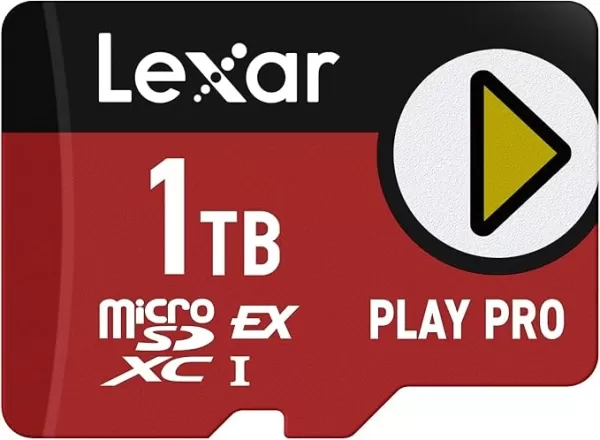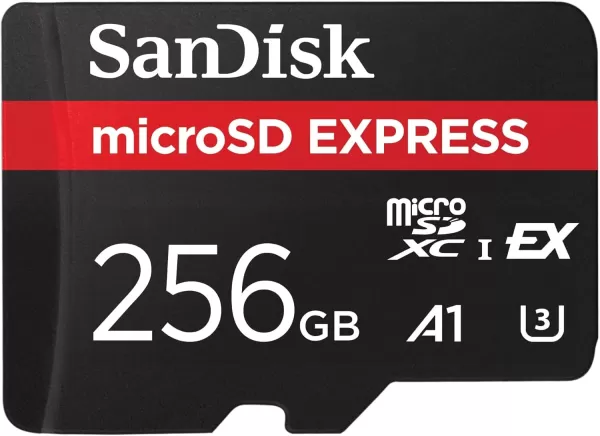Last week, Nintendo unveiled the Nintendo Switch 2, revealing that the new console exclusively supports expansion via MicroSD Express cards. While this may be inconvenient for those with existing MicroSD collections, the shift to MicroSD Express cards promises significantly enhanced performance. These cards leverage a faster interface, allowing them to achieve read/write speeds that rival the Universal Flash Storage (UFS) used in the Switch 2’s internal memory. This means games stored on expansion cards could theoretically load as quickly as those on internal storage, although it does mean you'll need to invest in the newer, more expensive MicroSD Express cards.
MicroSD vs. MicroSD Express
Over the years, MicroSD cards have evolved through six different speed ratings, starting from the initial SD card speeds of just 12.5MB/s, which are now considered slow. The evolution continued with SD High Speed at 25MB/s, up to the SD UHS III (Ultra High Speed) at 312MB/s. The game-changer came with the introduction of the SD Express standard five years ago, which significantly boosted speeds.
The key innovation with SD Express is its use of a PCIe 3.1 interface, a leap forward from the older UHS-I interface. This PCIe technology, also used in high-speed NVMe SSDs, allows full-sized SD Express cards to reach data transfer rates of up to 3,940MB/s. MicroSD Express cards, while not as fast as their full-sized counterparts, can still achieve speeds up to 985MB/s, which is three times faster than the fastest non-Express MicroSD cards.
Why Does the Switch 2 Require MicroSD Express?
Although Nintendo hasn't disclosed the exact reasoning behind requiring MicroSD Express cards for the Switch 2, the primary motivation appears to be speed. A game installed on a MicroSD Express card will load much faster than on a traditional UHS-I MicroSD card due to the PCIe 3.1 interface. This move could set a precedent for future handheld gaming PCs.
The Switch 2's internal storage has been upgraded to UFS from eMMC, making it logical for Nintendo to demand expansion storage with comparable speeds. Early demos suggest significant improvements in load times for games like Breath of the Wild, with Polygon reporting a 35% faster fast travel load time, and Digital Foundry noting a threefold increase in initial load times. These improvements might be attributed to faster internal storage or enhanced CPU and GPU capabilities, but the need for equally fast external storage is clear to prevent any bottlenecks for future games.
Moreover, this requirement positions the Switch 2 to take advantage of even faster storage solutions in the future. The current fastest SD card standard, SD 8.0 Specification, enables full-size SD Express cards to reach speeds up to 3,942MB/s. Although MicroSD Express cards can't match these speeds yet, future advancements might allow them to, provided the Switch 2 supports such speeds.
AnswerSee ResultsMicroSD Express Capacity Options
MicroSD Express cards are just beginning to gain traction, and with the Nintendo Switch 2's launch on the horizon, the market is expected to expand. Currently, options are limited. Lexar offers a single MicroSD Express card in 256GB, 512GB, and 1TB sizes, with the 1TB variant priced at $199.
 ### Lexar Play Pro MicroSD Express
### Lexar Play Pro MicroSD Express
0See it at Amazon
SanDisk, meanwhile, lists one MicroSD Express card, topping out at 256GB, which matches the internal storage of the Switch 2. By the time the Nintendo Switch 2 hits the market, expect to see mostly 256GB and 512GB options, though as demand grows, companies like Samsung are likely to introduce higher capacity cards.
 ### SanDisk MicroSD Express 256GB
### SanDisk MicroSD Express 256GB
0See it at Amazon




















